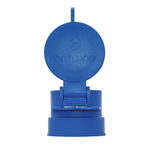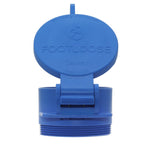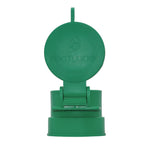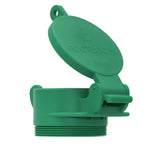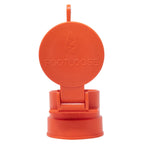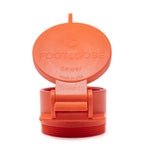You have no items in your shopping cart.
It can be great fun traveling the countryside in an RV, going wherever you want, seeing whatever sights attract you. The USA is a huge country, and if you travel by RV, you are not limited to seeing common tourist attractions or paying exorbitant hotel fees. You get to be part of the great outdoors. Of course, you still want some comforts of civilization - hence you are in your well-equipped RV rather than a tent!
Assuming that your RV has some form of plumbing installed you will need to consider the different types of wastewater that you have building up on board in tanks. Unfortunately, things are not as simple as at home, where you can simply flush the toilet and run the sink, without ever worrying where anything goes. In the case of your RV, you have onboard tanks, which will simply fill up, unless you go through the process of emptying them. If you let that happen, things can get very messy. A bet you never even knew that your RV is likely to contain some form of sewer cap as part of a waste hosing system and that you will have to attach that to another type of sewer cap at an RV park or disposal point.
There are two types of wastewater that you need to consider. Gray water and black water. It is vital that you remember the difference between the two types (which have to be kept separate) and make certain that you have systems in place to dispose of both types. The main difference between the two wastewater holding tanks is the source of the waste (and thus the “dirtiness” of the waste).
Gray water is water that you use when cleaning, e.g. water from your shower, sinks and even washing machine and dishwasher if you have them. Although this waste water is likely to have soap and dirt included in it, it is not considered to be a health hazard. There are not too many problems with disposal of grey water, and there are even places that let you simply pump it into the ground (but check first that you are in such a place before you do that).
Black water, however, is the sewage from your toilet. You have to be quite careful with how you dispose of black water. People will not be very happy at all with you if you simply dump your black waste, leaving it lying around for others to find! Plus it is, of course, illegal to dispose of black waste in an unapproved way.
Most RV parks have places where you can dump your black waste. While the design will differ between RV parks, most parks will have outlets in the ground, with sewer caps on. You will need a sewer hose to transfer your waste from your holding tank to the sewer cap of the in-ground tank.
 Our Footloose Sewer Caps are one of the more common types of connections that you will encounter.
Our Footloose Sewer Caps are one of the more common types of connections that you will encounter. There may need to be some trial and error, if you are new to RV camping, as you discover just how much you can store in your tanks before they fill up. You don’t want to find that they fill up to capacity when you are in the middle of nowhere!
Of course, you won’t want untreated sewage sitting in your camper for long. You can help by applying a special type of toilet tank chemical which helps break down your waste and, most importantly from you and your family’s point of view, reduce any smells. Make certain you follow the instructions on the chemicals regarding how often you should apply them, and at what dosage.
There are special types of toilet paper on the market that are designed to work with RV systems. They break down in the toilet tank chemicals, unlike the normal toilet paper you would use at home.
You will need to have separate hoses for your two types of waste water - you definitely don’t want the two types to mix!
When you arrive at an RV park or waste disposal site you can hook up your waste hoses from the grey and black water outlets on your RV to the sewer caps on the disposal systems - don't get them mixed up. It’s a good idea to delay opening your dump valves until you’re ready to dump your waste, though.
It is a good idea to dump your dirtiest tank first. If you have multiple gray water tanks, start with your black water, then dump your dirtiest gray water, finishing with your cleanest water. This is a particularly good idea if you are unable to have separate hoses for your tanks because it means that each successive emptying will be of less dirty water, and this will help to clean the hose out.
Occasionally you may find that the solid waste blocks up your pipes. If this happens, add some more chemicals and water to your system. Drive along a bumpy road to slosh the new chemicals around in your tank, and hopefully, break up your blockage. You may have to do this multiple times if it is a really difficult blockage.
Please remember. Whatever you do don’t dump your black water onto the ground. Search for an RV park or specialist RV dumping station, to dispose of your sewage! Be a tidy and thoughtful camper.
Are you new to the camping world? Check out the best RV hacks tips and tricks!




